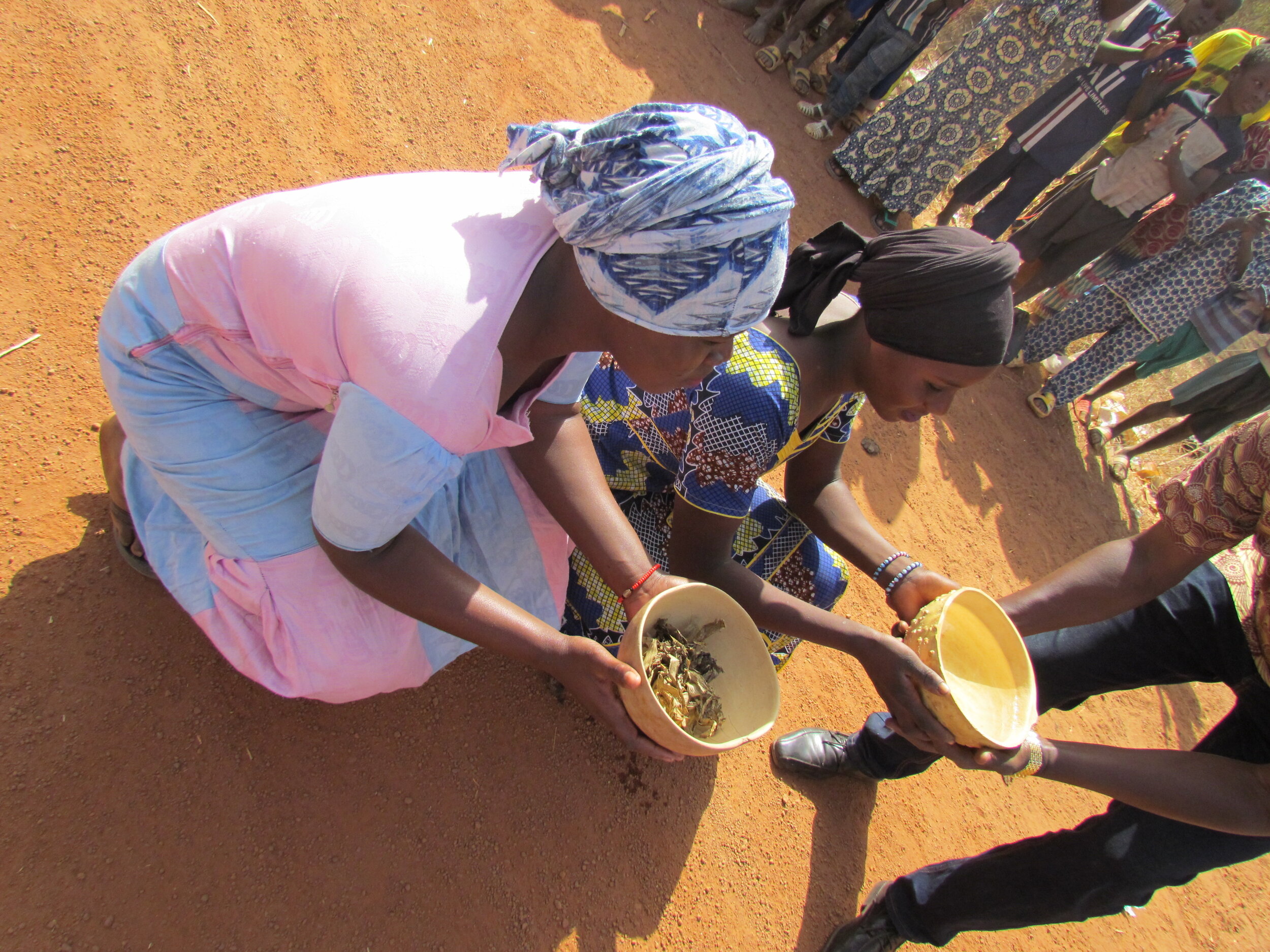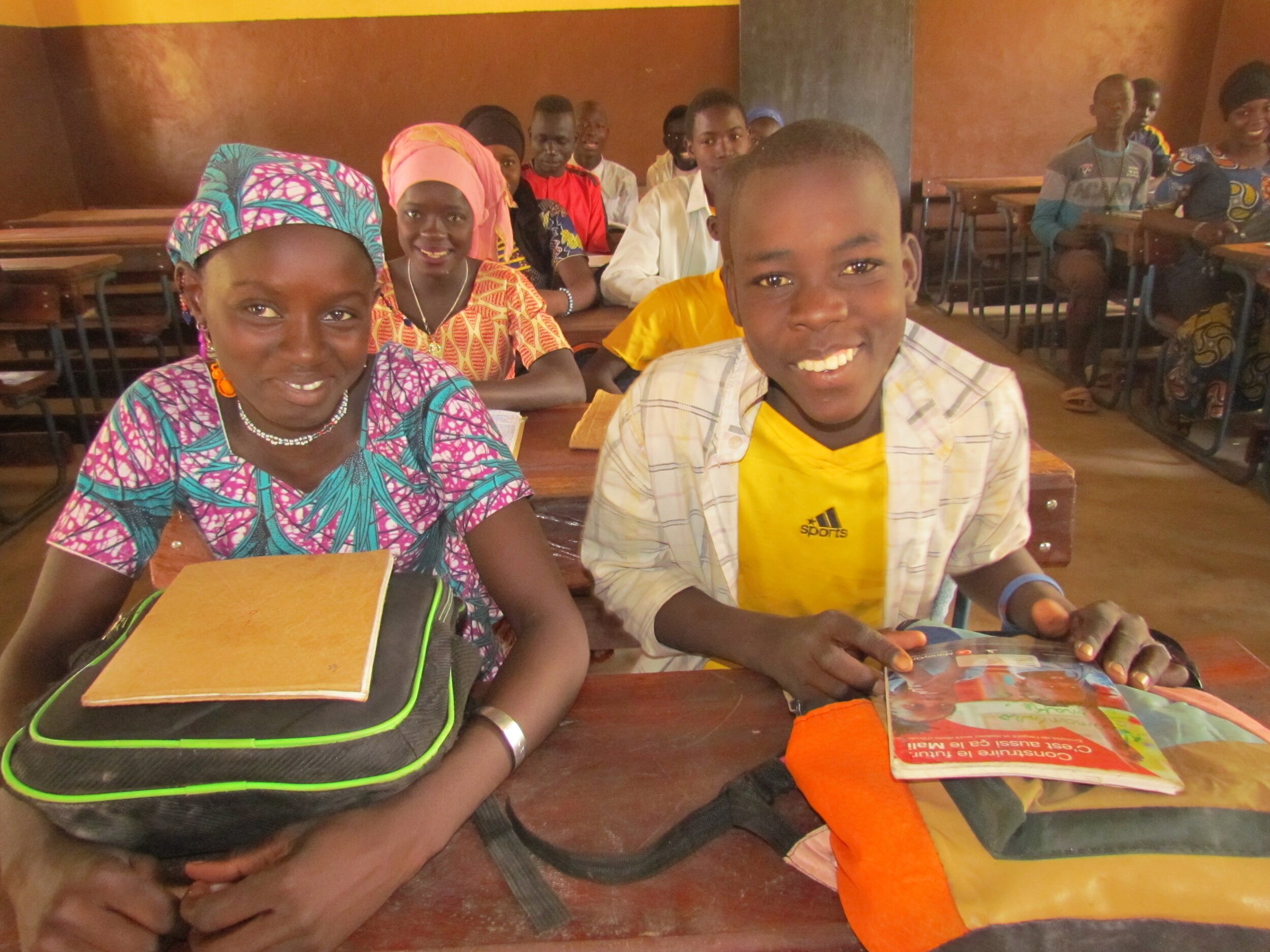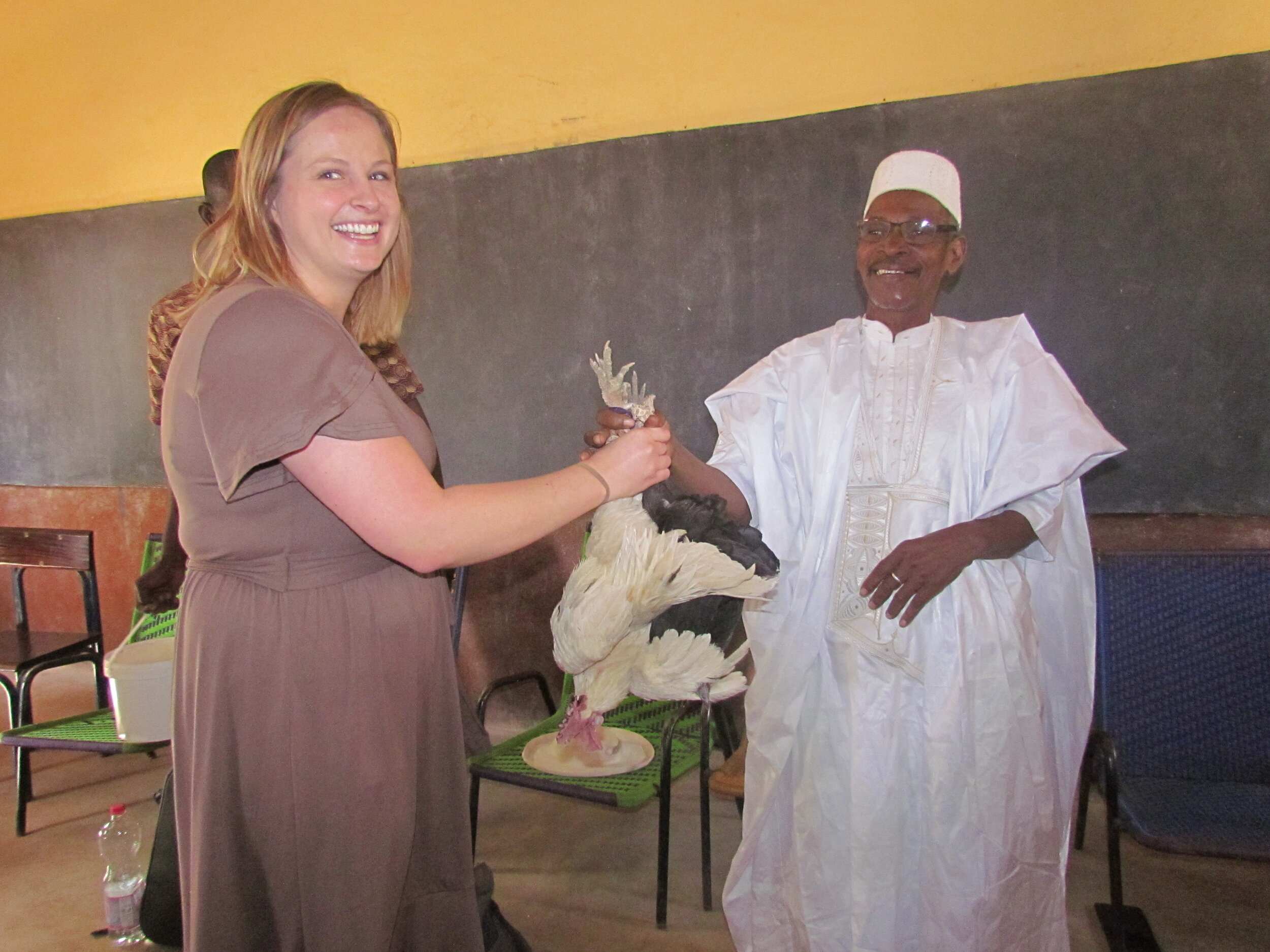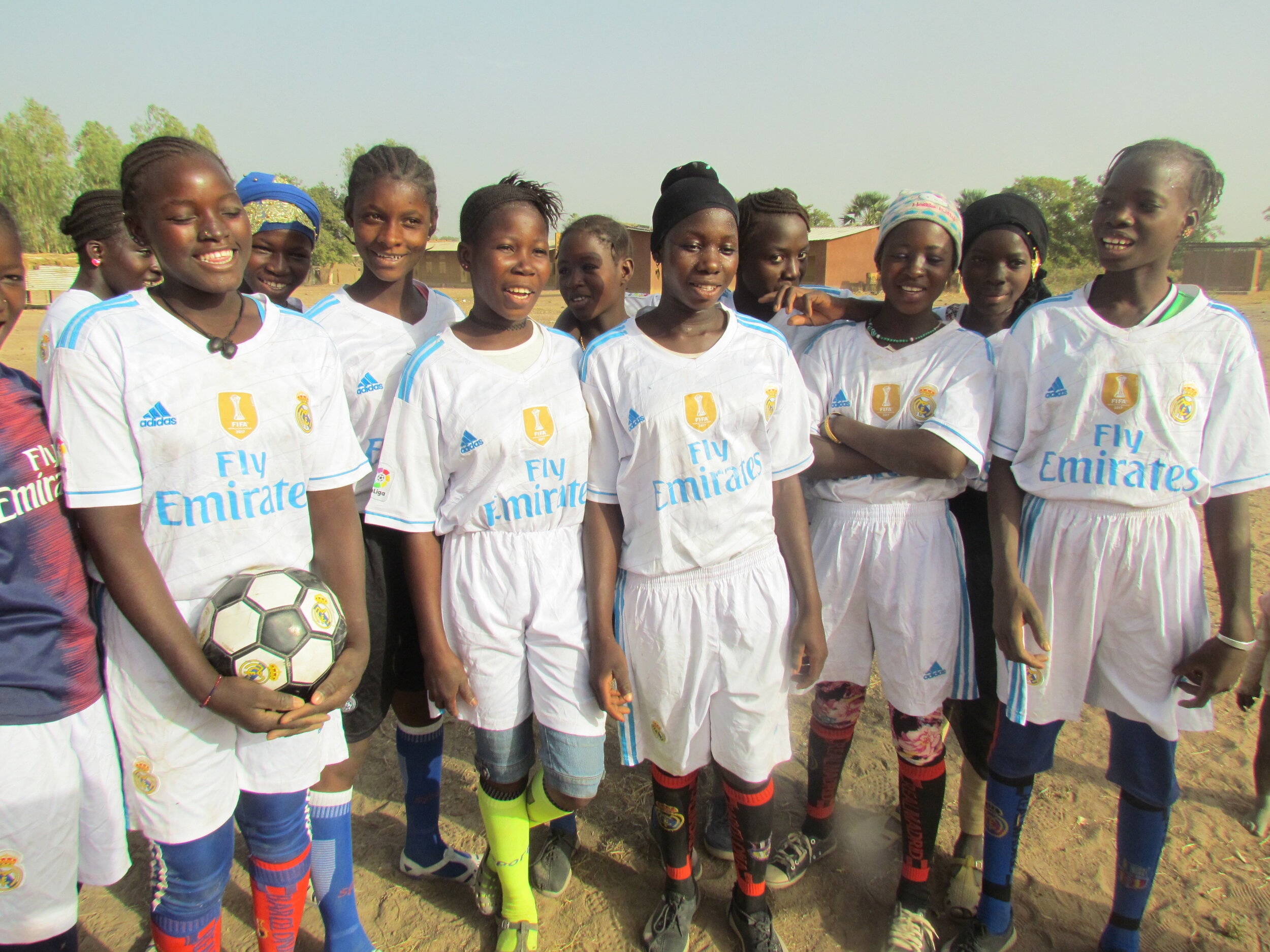The US- and Mali-based staff spent two weeks in January together in the field in Mali. Our incredibly limited access to the internet did not allow us to post our blog updates from the field, so we are sharing them now from the zippy wi-fi of the U.S. Join us on the blog for the next few weeks for a daily update on the trip!
By Merritt Frey, Executive Director
On this Thursday morning we woke in the big city of Bamako, but immediately headed south to the “big” town of Ouelessebougou. Ouelessebougou is home to our own kind of “home-away-from-home” hotel for me, the staff, and Tim, but it was a new experience for Courtney. As hotels go, it is pretty basic — no hot water, no sheets, no towels, etc. BUT it does have a wonderful mango tree in a little courtyard that serves us quite well as an office and living room.
Before making ourselves at home at the hotel though, we had to get some work done. First, we visited the village of Kafara and then we headed on the long drive to Kolimba.
Kafara and The Mindful Bunch Middle School
This school just opened in 2018, so it is one of our newest schools. In fact, this was our first expedition visit to the school and we were welcomed with open arms. It was wonderful to see a huge turnout from the school committee — an indication of meaningful engagement by the parents and elders of the village. Of course it was also great to see the school full of children and talk with them about their dreams.
As is the case with most new schools, The Mindful Bunch School is in real need to textbooks. Thanks to our supporters we were able to deliver 90 French textbooks to help the students with their most crucial subject — without French skills students cannot learn any other subject because classes are taught in French and tests are given in the language.
The school is already quite full, with 107 students this school year. The school committee had two priorities we really support. First, they would like to get solar power at the school to provide light for night study classes. Second, they volunteered a real concern about girls’ education and dropout rates.
Kafara is not yet part of our Girls Project, but while we were there Hindaty did have a great session about menstrual hygiene with the girls of the school. In addition Courtney and Tim conducted some great student interviews, which we will share on the blog soon.
As we packed up to leave, the village presented Courtney with two chickens and — in first for us — a pail of milk from the village goats. Dinner that night included free range chicken, and breakfast the next day included a lovely yogurt drink!
Kolimba — Exploring ideas for parental involvement
After a quick lunch we headed down the long, bumpy road to Kolimba. This drive takes about 2 hours from Ouelessebougou, and is not for the faint-hearted. Between the dust and the bumps and the general discomfort, by the time we returned to the paved road at 7pm Courtney let out a huge cheer!
In between the long, bumpy drives to and fro, we met with the teachers and school committee of Kolimba’s Nieta Kalanso Middle School. School was out for the afternoon while we were there, but there was a large group of girls practicing soccer for our entire visit.
The school hosts 133 students this year, which continues its steady growth since opening in 2015. The biggest challenge for the school committee is engaging parents in school and in their children’s education — sound familiar? We discussed ideas for how to tackle this problem. While there is no silver bullet, Kolimba may be a village where we partner to test some ideas on parental involvement…stay tuned!
After our meeting we had a little time to visit with the soccer-playing girls. Kolimba is a Girls Project village, so some of these girls had worked with Hindaty on soccer for years and others were new to the team this year. It was wonderful to see them taking the initiative to practice despite the hot afternoon.
We took another trip down that long, dusty road before we returned to our mango tree for a late dinner in the dark. After a day that long, pretty much anything would taste good and our meal was absolutely delicious — even if it was hard to know what you were eating in the dark!









